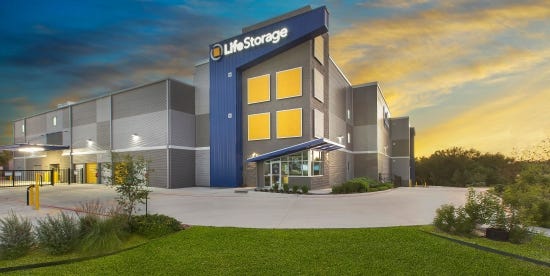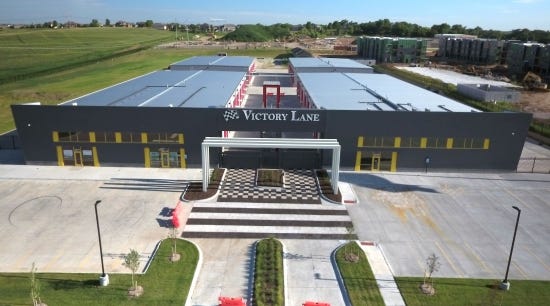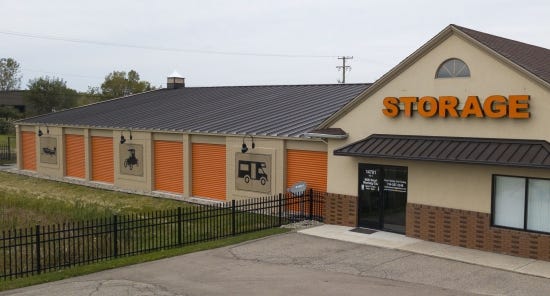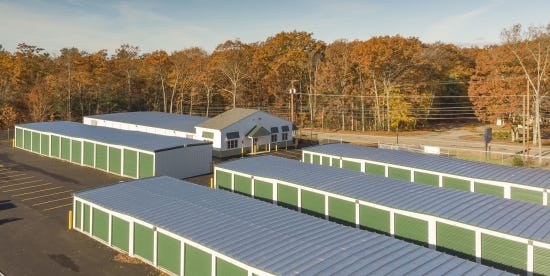The materials you choose for your self-storage development will have a huge impact on building costs, longevity and overall value. Metal is a favorite in this industry, and for many good reasons. Learn what they are in detail.

If you’re developing a new self-storage facility, you’re likely wondering which materials will be best for your project in terms of aesthetics, maintenance, longevity and cost. Metal is a key component of most buildings in this industry, but why does it dominate the landscape, especially when there are so many other options from which to choose? Let’s explore all the benefits.
Value and Longevity
First and foremost, you want the building solution with the greatest value. Metal buildings come at a competitive cost, both initially and over the course of their lifespan. Plus, they can generally be erected at least 30% faster than conventional structures such as wood and concrete—and the faster a building goes up, the quicker your return on investment.
Add to that, metal buildings and roofs have proven longevity; and the longer a building lasts, the more cost-effective it is over time. When correctly built and maintained, metal buildings have the potential to outlast concrete or wood. Why? Because corrosive-resistant steel that has been properly treated with a coating to protect it against the infiltration of water and oxygen resists typical causes of deterioration such as mold, termites/insects, moisture, etc. It doesn’t warp, crack, split or creep, thereby maintaining its shape and structural integrity.

Life Storage in San Antonio
In addition, the isotropic nature of steel provides dimensional properties that give it the same strength from side to side, up and down, and in all loading directions, offering resiliency against wind. Various studies affirm that metal roofing can endure windspeeds up to 160 miles per hour without failure, and a report from the Metal Construction Association notes that metal roofs can have a lifespan of up to 60 years.
Of course, a metal building’s life-cycle costs and total lifespan can be impacted by natural and man-made events, but its tensile strength protects it from seismic forces, high winds and heavy snow loads. Plus, steel is noncombustible, which means it can withstand fires and limit the spread of flames, according to a recent study in which the Metal Building Manufacturers Association (MBMA) assisted Johns Hopkins University in an AISI Standards Council Fellowship research project. For times when a metal building is overwhelmed by a hurricane, tornado, hailstorm, etc., keep in mind that metal wall panels and roofs are often under warranty by the manufacturer.

Victory Lane Storage in Omaha, Nebraska
Framing Efficiency
MBMA also commissioned a study, completed by the Athena Sustainable Materials Institute, that revealed another inherent advantage of a metal-building system: the ability to use “welded-up” framing rather than milled steel shapes. That means the building can be custom-engineered, allowing the manufacturer and engineer to make it stronger where necessary and less so in places where strength isn’t critical. That saves money and time, without compromising design.
Here's something you may not know about welded-up framing: It only needs to be welded on one side. There’s no reason for it to be welded on both sides unless shear force requires it, and that’s typically rare in rigid frames because the building system comprises many other integrated components. These include structural steel members, secondary members that are made with cold-formed steel and steel joists, and roof and wall-cladding components specifically designed to support and transfer loads.

Lock Tite Storage in Flat Rock, Michigan
An Excellent Barrier
Insulated metal panels (IMPs) are often used for self-storage cladding and roofing because they’re energy-efficient, provide a solid weather barrier and can be designed without exterior wall framing. Composed of closed foam between two metal panels, they provide a consistent vapor barrier and offer a high R-value, typically 7 to 8 per inch. They also create thermal stability and essentially eliminate off-gassing that’s typical with rigid-board insulation.
IMPs provide an air, vapor and water barrier all in one, eliminating gaps that can reduce thermal value and further reducing the potential for air or moisture intrusion. Not only do they help you meet your development’s insulation-code requirements, they enable your self-storage buildings to consistently maintain proper temperature, even in air-conditioned units.
Lots of Options
Metal-building manufacturers and their custom suppliers and builders offer the self-storage industry a range of exterior building finishes at a variety of price points, which makes it possible to custom-design buildings that uphold an operator’s brand standards while meeting the expectations of local zoning officials. Metal buildings can also be designed with an eye toward future expansion. This simply entails removing a wall, erecting the steel framing system for the new space, and cladding the addition to match the existing structure.

Sanford Safe Storage in Sanford, Maine
Finding the best building solution for your self-storage development starts with contacting an accredited metal-building manufacturer. They can show you how to address your unique needs and provide greater detail on the varied benefits of metal components.
Tony Bouquot is the general manager of the Metal Building Manufacturers Association, which provides leadership, research and education to help builders, owners, architects, developers and others understand the value of metal-building systems for low-rise, non-residential construction. He’s been a leader in the building-products industry for more than 30 years and regularly contributes to publications nationwide. He also speaks frequently at conferences across the United States. He can be reached at [email protected].
About the Author(s)
You May Also Like





